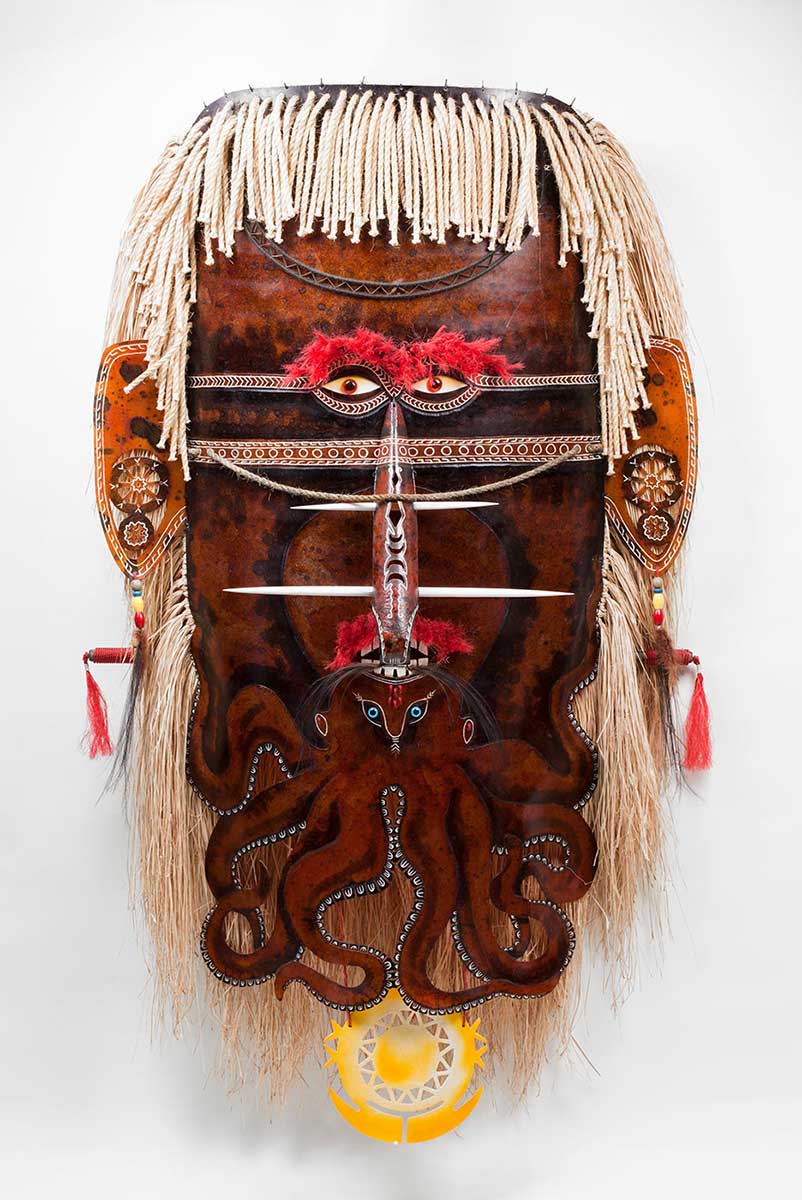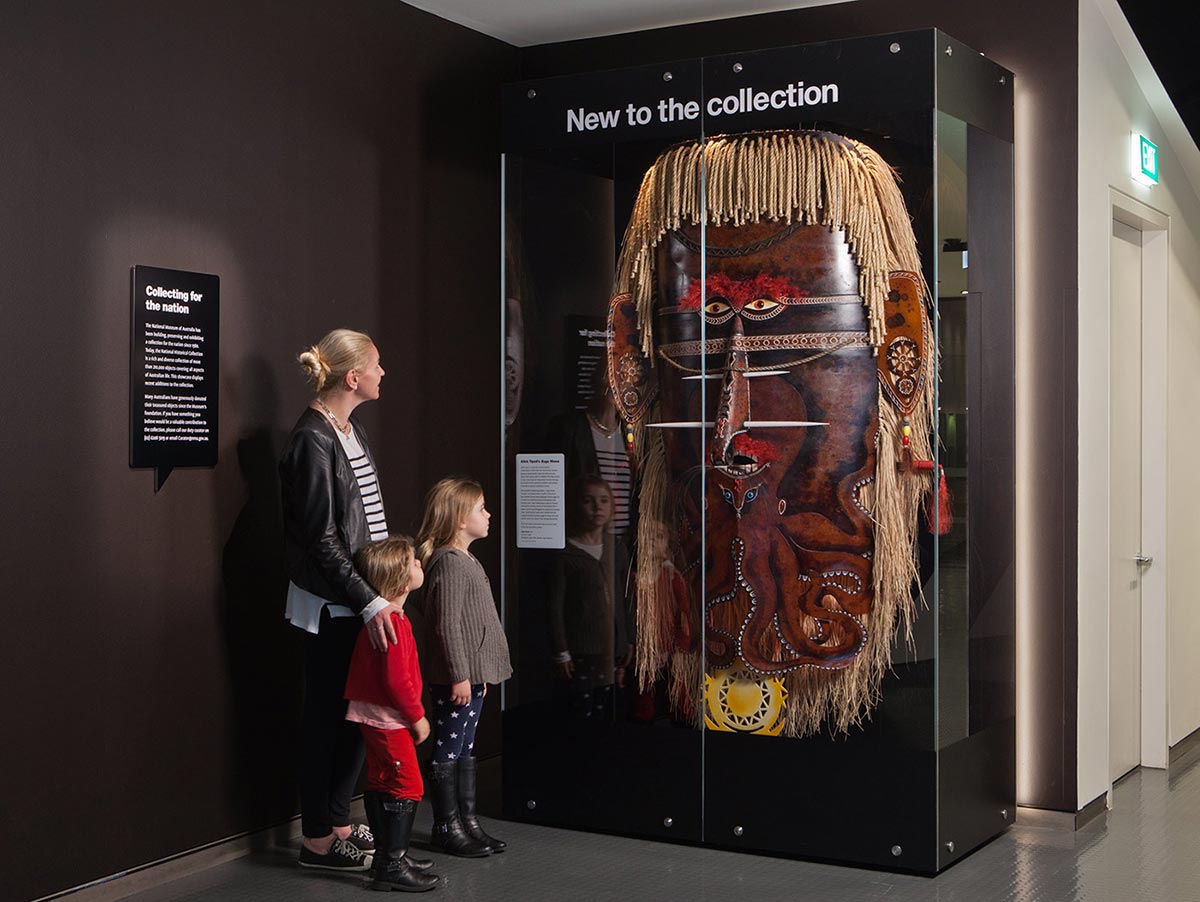
The 2.3-metre high Sugu Mawa artwork created by Alick Tipoti is a powerful expression of the artist's Torres Strait Islander heritage and the story of the Octopus Clan.
Tipoti is well-known for his intricate linocuts and often experiments with the use of modern materials to express traditional themes.
Sugu means 'octopus' and Mawa means 'mask' in Tipoti's Western Torres Strait language of Kala Lagaw Ya. The artwork relates to a traditional dance belonging to the Octopus Clan.
Alick Tipoti, 2012:
I have always been fascinated with ancient TSI [Torres Strait Island] masks, and waited a long time 'til I felt I was ready to revive mask-making in the Torres Strait.
Sugu Mawaw Sagul is a dance only performed before feasting only at a certain time of the Moon/month. Only old men wore such masks as they dance[d] on the beach at high tide in the early hours of the morning. When the tide drops the next morning the lagoons with large rocks are plentiful with large Octopus.
Modern take on traditional masks
The National Museum acquired Sugu Mawa in 2012. At 2.3 metres this is the largest of a series of mask artworks created by Tipoti.
Traditionally, Torres Strait masks were much smaller and crafted from the carapace of turtles caught for food. They were worn to cover the wearer's face during ceremonies, to welcome visitors, and for recreation.
Often masks were embellished with items such as pearl shell, feathers, nuts, fibres or human hair. In times past, turtle shell was easily obtainable in the Torres Strait. Today, however, declining numbers of turtles mean this shell is now a restricted item.
Tipoti has deliberately oversized his artwork to convey a sense of the power of the Octopus Clan. Fibreglass has been used to replicate the look and feel of turtleshell and achieve the larger scale. The decorations on the ears are made of beads and feathers and the hair of grass and rope.
Alick Tipoti
Alick Tipoti was born in 1975 on Waiben or Thursday Island in the Torres Strait, located between Queensland’s Cape York Peninsula and Papua New Guinea.
Tipoti’s work depicts the stories of his ancestors as told by his father and other Elders, tales of Islander life and rituals before colonisation.
This mask demonstrates the importance of archival research and the knowledge of the Elders in the development of skills required for making culturally appropriate artwork. It illustrates and references Torres Strait Islander heritage and cultural knowledge, helping to keep traditions handed down through generations alive.
The Museum holds several other artworks by Alick Tipoti, including Maza Mawa (Wapiya) II (Mask of the Reef). The collection also includes prints, linocuts and an acrylic painting.
In our collection
